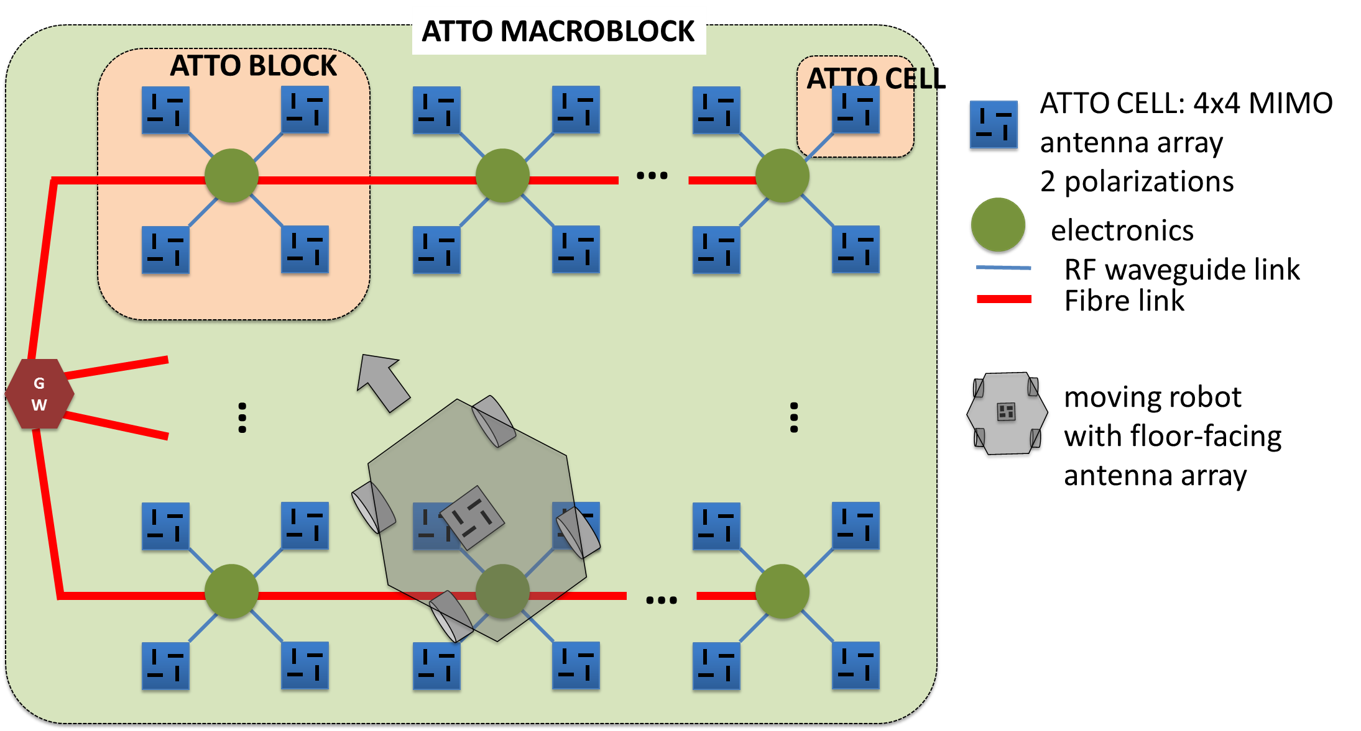In order to provide fibre-like connectivity to moving objects, the new concept of ATTO-cells is introduced. The concept is based on the integration of small cells (ATTO-cells) in floors that are wirelessly connected through close proximity antennas integrated in the floor-facing side of driving robots or feet of walking robots or shoes of humans. The floor antennas are accessible through a very high-speed local fibre backbone connected to a gateway. Note that 60 GHz is the obvious choice in order to reach the very high bitrates while limiting cross-talk between cells.

The figure illustrates the overall concept for a typical scenario in case of moving robots (numbers are indicative and for further study). An ATTO-cell consists of a 4 channel antenna array (5×5 cm2) able to cover an area in the order of 15×15 cm2. Four of these cells will be connected through RF substrate-integrated waveguides to a shared RF transceiver (with integrated RF- switches) to form an ATTO-block. Each ATTO-block will be optically connected to the ATTO-gateway using a novel fibre interconnection network. The ATTO-gateway and the NxN interconnected ATTO-blocks will form an ATTO-macroblock. For example if N=50, an ATTO-macroblock could cover roughly an area of 250 m2 where one could easily support 100 moving objects or more resulting in an aggregate bitrate of over 10 Tb/s. Multiple of these ATTO-macroblocks could be combined to cover even larger areas where extreme high bitrate densities are required. It is clear that this is a very scalable solution, ranging from single rooms to factory floors.